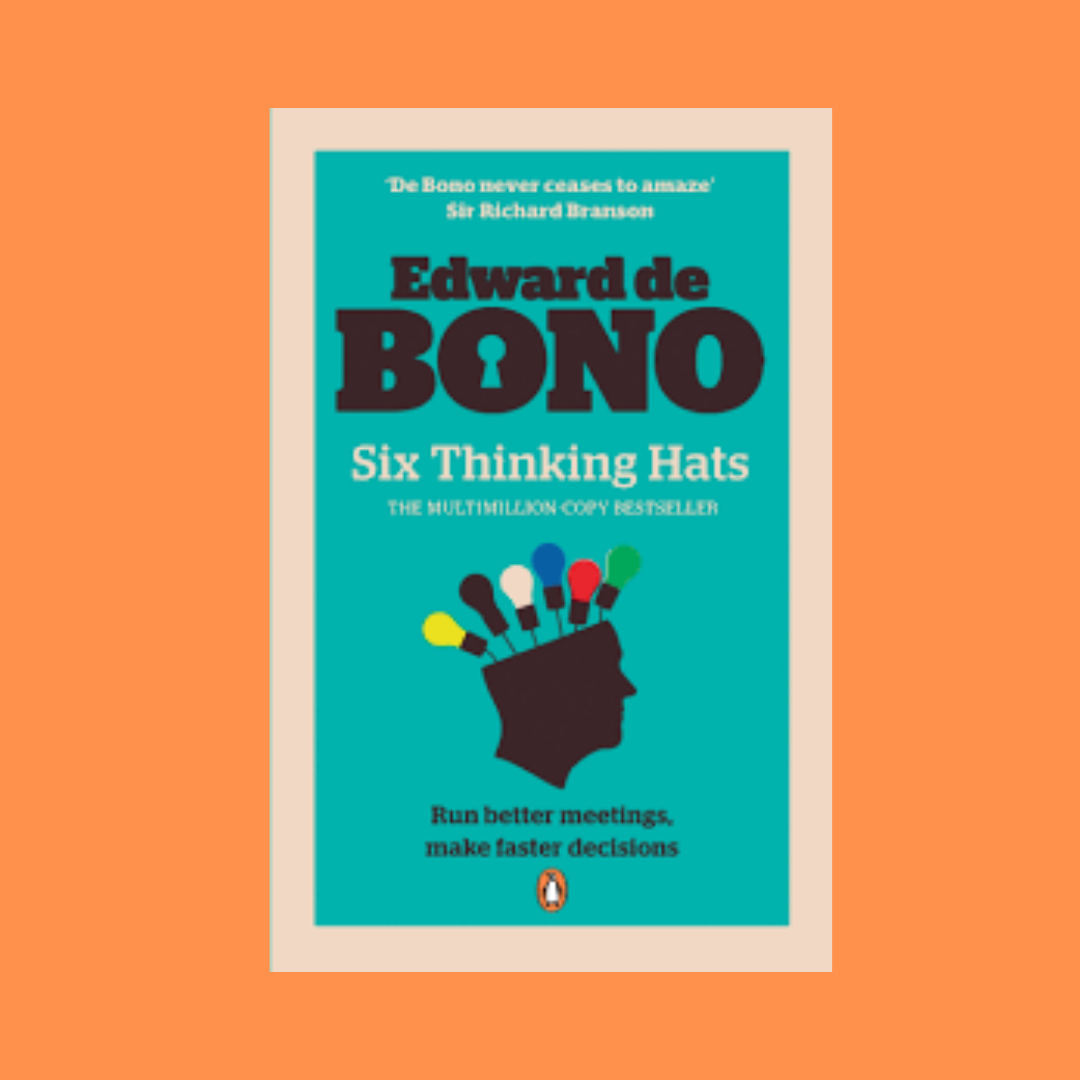
“Six Thinking Hats” by Edward de Bono
Rating: 4/5
Although this book was originally published in 1985, I found it to be digestible, practical, and extremely relevant. In this book, de Bono presents a model that I think could be super useful when brainstorming, planning, reviewing, and communicating in general! This model simplifies the practice of thinking in that: 1) it allows the thinker to deal with one thing at a time; and 2) it allows the thinker to switch how they are thinking in a way that doesn’t threaten ego or personality.
I love a good mental model and, “Six Thinking Hats,” is a great tool to add to your tool box. This mental model is basically an extension of the ‘thinking cap’ idea that many of us are familiar with. When we are wearing one of the hats, we have permission to play different roles and ultimately use different parts of our brain. Each of the hats can be used to: 1) request someone to put on a hat and think that way; 2) indicate the preferred thinking type for that moment or conversation; 3) signal to others you are attempting one of the thinking types; and 4) signal to yourself how you want to think in that moment.
This is a short book so a fairly quick read. I appreciated de Bono’s efficient writing style: no unnecessary words used! At the same time, there is so much packed into this book that I can see it being one to go back to over and over.
Oh, and in case you are wondering what each of the hats represent, here you go:
White Hat – concerned objective with facts and figures; opinion is never allowed under white hat thinking.
Red Hat – concerned with emotions and feelings (positive, negative, or neutral); this hat allows emotions and feelings as inputs to a discussion in an intention way; it can be a way to explore the feelings of others by asking for a red hat view.
Black Hat – concerned with the logical negative (why something won’t work); can be used to limit negativity (i.e., a thinker may be asked to remove their black hat), objectively bring negative elements to the conversation, point out errors in the thinking procedure, judge an idea against the past to see how well it fits with what is known, and project an idea into the future to see what might go wrong.
Yellow Hat – speculative positive; it is a deliberate search for the positive; yellow hat thinking is concerned with proposal generation, positive assessment of proposals, and the development or building out of proposals.
Green Hat – creative and lateral thinking, concerned with new ideas and new ways of looking at things; allows us to use creative thinking in a focused and deliberate manner; this hat won’t make you more creative but it will give you more time and focus to BE more creative!
Blue Hat – control of thinking; a thinking conductor/choreographer; key role is focus.